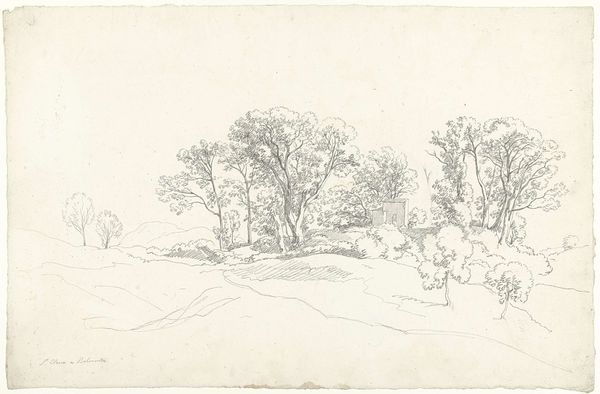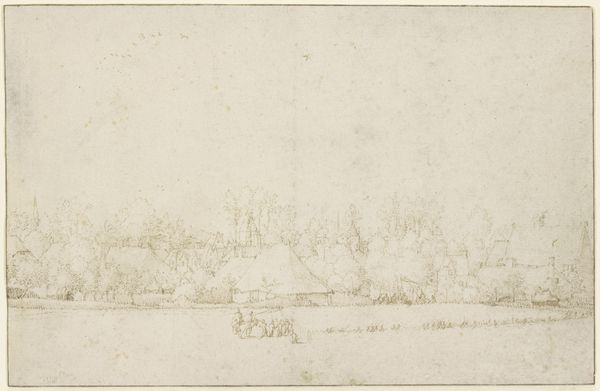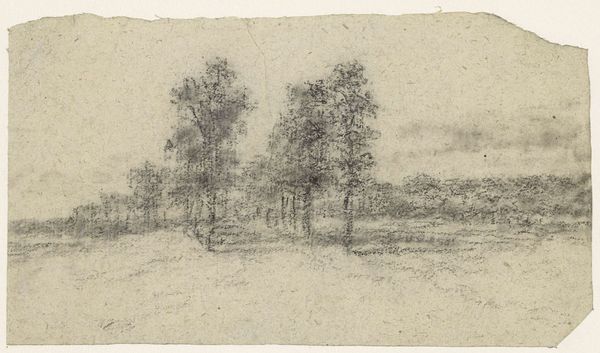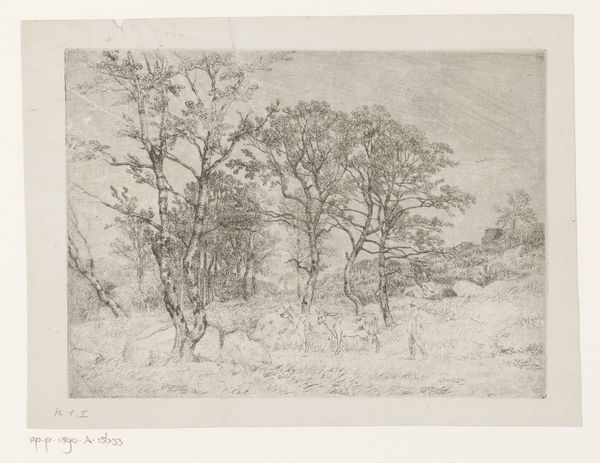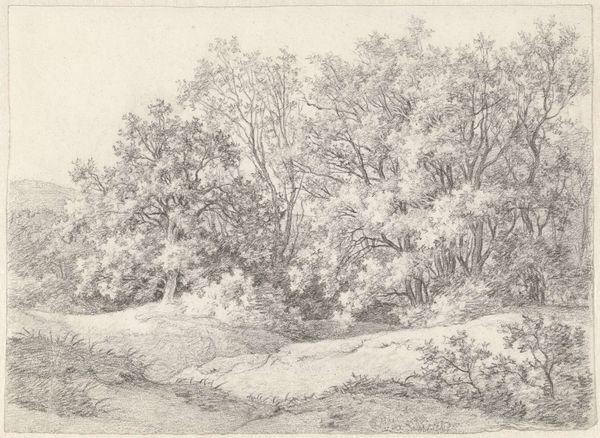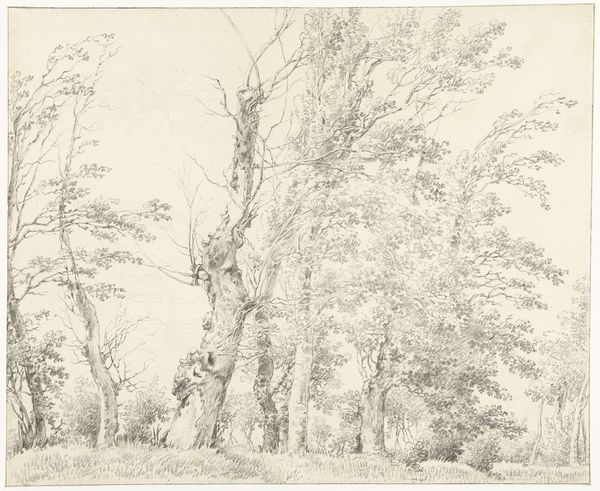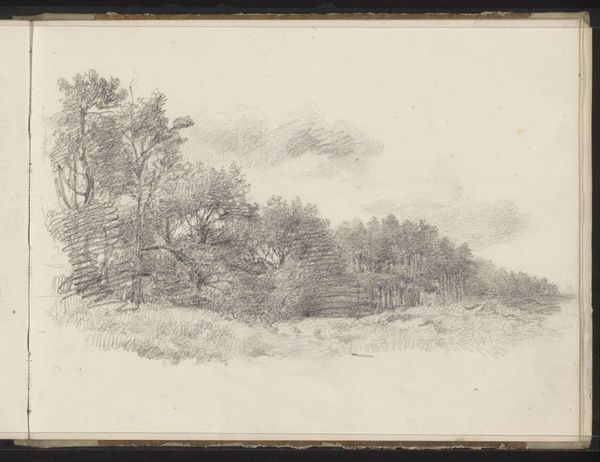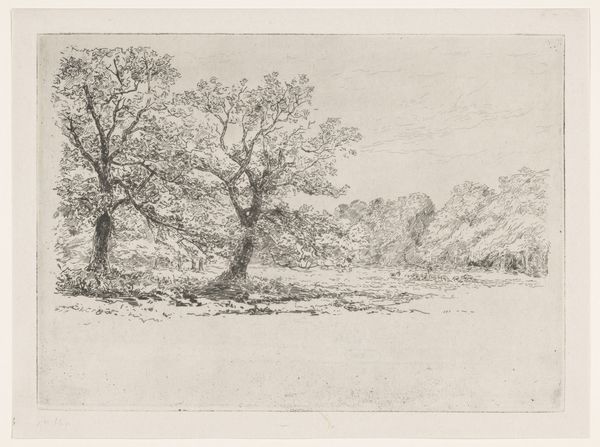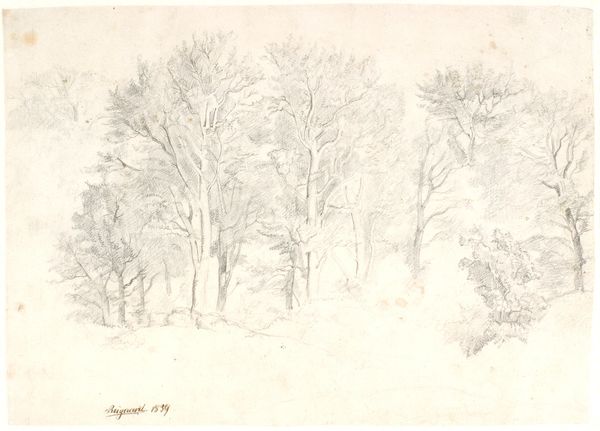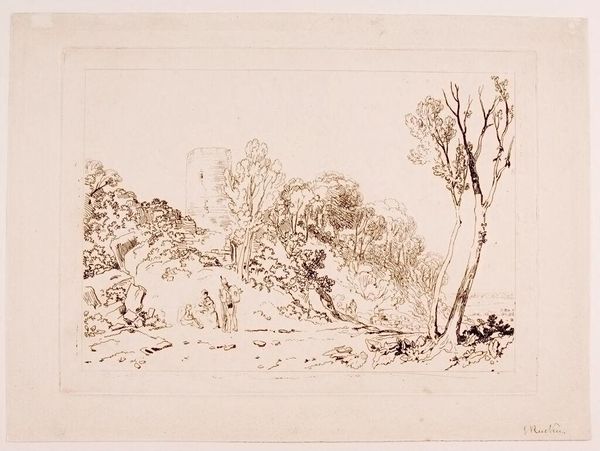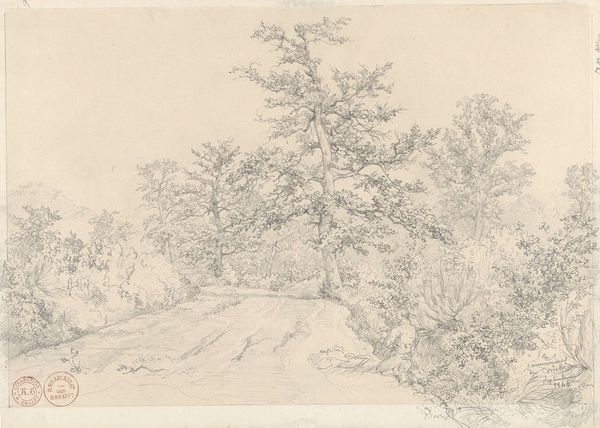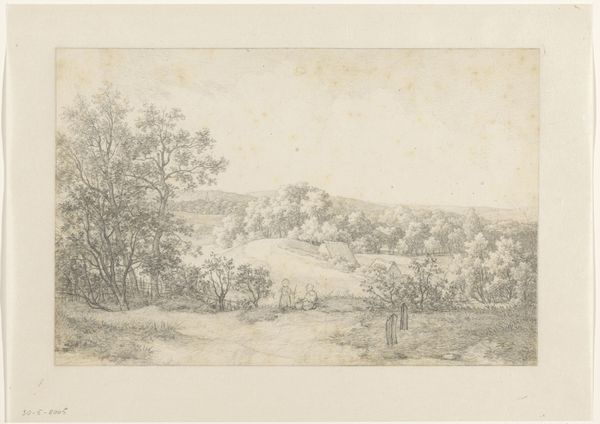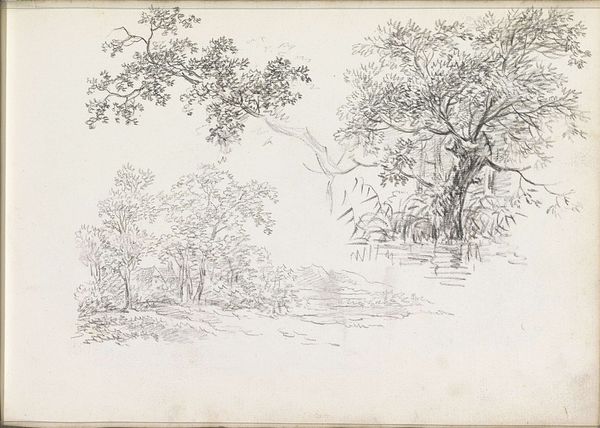
drawing, pencil
#
drawing
#
pencil sketch
#
landscape
#
pencil
#
pencil work
#
northern-renaissance
#
realism
Dimensions: height 208 mm, width 320 mm
Copyright: Rijks Museum: Open Domain
Editor: So, here we have Pieter van Cranenburgh's pencil drawing, "Gezicht langs de Amstelveense Weg," made in 1801. It feels very…quiet, almost melancholic. What strikes you most about this piece? Curator: What I find compelling is its engagement with the visual culture of its time. Think about the rise of landscape art alongside increasing urbanization. This drawing presents a particular view, framing nature in relation to the road, the Amstelveense Weg, a pathway connecting rural areas to Amsterdam. Does this portrayal offer an escape, or is it about shaping the narrative and our perceptions? Editor: That's interesting. So, you're saying the location itself plays a role in how we perceive it? I hadn't considered that. Curator: Absolutely. Who do you think had access to landscapes like this, and how did those people relate to that landscape? And what did that accessibility, or lack thereof, mean for broader society? The location isn’t a neutral backdrop. Editor: So, beyond just depicting the scene, the artwork makes some form of a social statement, of how it's representing something deeper than just nature? Curator: Exactly! The "view" isn't objective; it's constructed and laden with social meanings about how different classes interact with the landscape. Van Cranenburgh makes specific artistic choices which shape the imagery he presents, such as depicting this scenery in this precise way. This has impacts on social dynamics in the moment but continues throughout time, and can be recognized now by us looking at the original artwork. Editor: I see your point. It encourages me to reconsider this kind of artwork less as simply pretty scenery and more as active cultural document. Curator: Precisely! Thinking of this way enriches the experience considerably. Editor: I never would've considered it that way; it makes me wonder how modern-day representations of nature reflect our current socio-political views! Thanks!
Comments
No comments
Be the first to comment and join the conversation on the ultimate creative platform.
